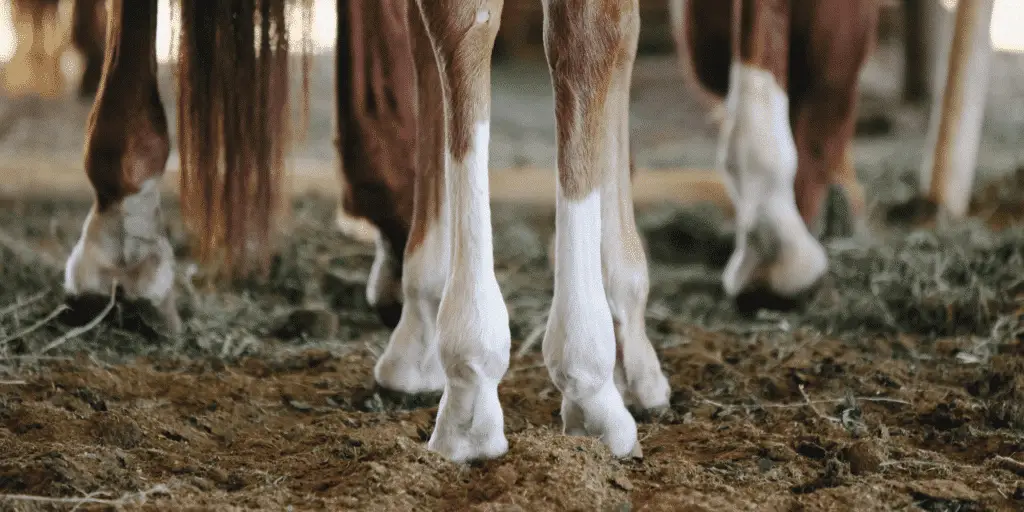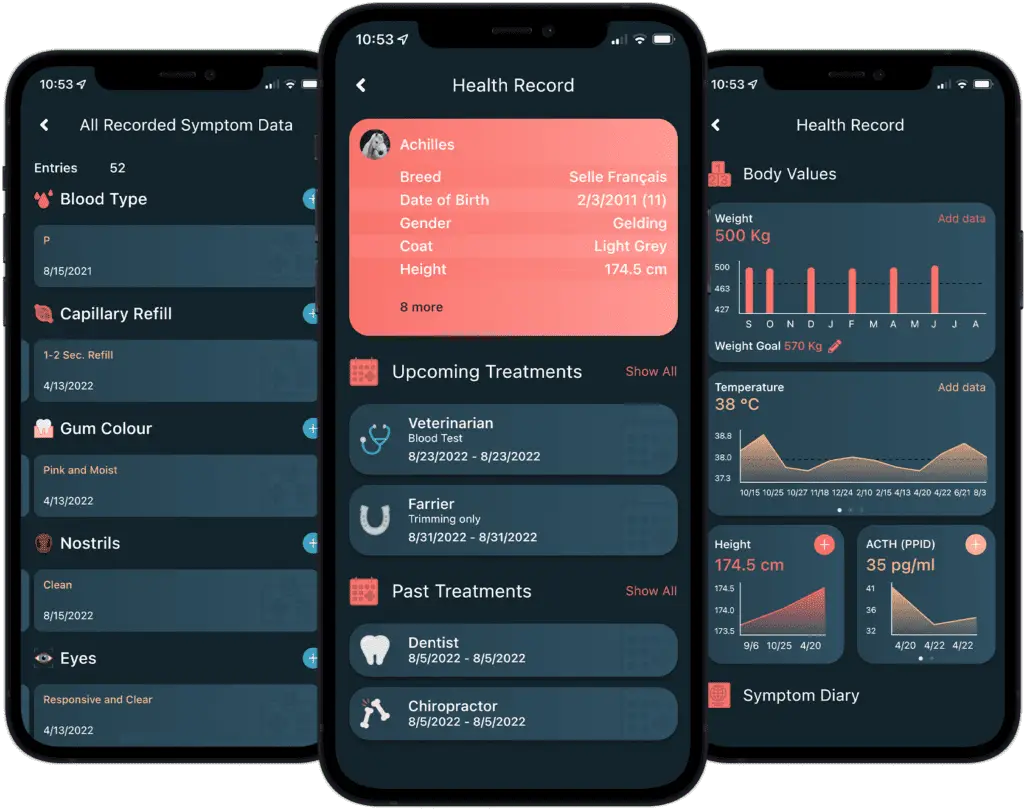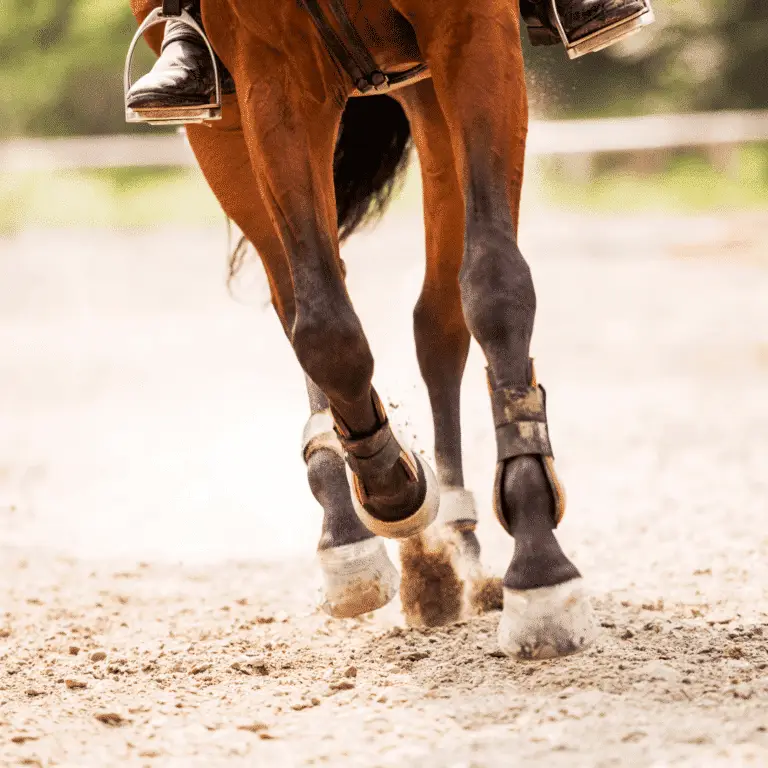
Kissing Spines in Horses
Kissing Spines in Horses Seek veterinary advice if you suspect this disease. Kissing spines is a skeletal abnormality which describes

Seek veterinary advice if you suspect this disease.
Fractures in horses refer to breaks or cracks in their bones, which can occur due to various causes such as trauma, overexertion, accidents, or underlying bone weakness. These fractures can range from minor hairline cracks (stress fractures) to more severe breaks that may involve displacement of bone ends (displaced fractures) or penetration through the skin (compound fractures). Fractures in horses require prompt veterinary attention and treatment to ensure proper healing and to prevent complications that can affect the horse’s health and mobility.
Different Fractures in horses include:
Avulsion Fracture: This occurs when a small piece of bone is torn away from the main bone due to the forceful contraction of a muscle or tendon attached to it.
Compound Fracture: Also known as an open fracture, this involves the broken bone penetrating through the skin, exposing it to the external environment and increasing the risk of infection.
Chip Fracture: Involves a small fragment or piece of bone breaking off from the main bone, often caused by a direct blow or trauma.
Displaced Fracture: Here, the two ends of the broken bone are separated and are no longer aligned properly.
Simple Fracture: Also called a closed fracture, this is a clean break of the bone without any penetration of the skin or displacement of the bone ends.
Stress Fracture: Typically a hairline crack or small fracture in the bone caused by repetitive stress or overuse rather than a single traumatic event.
Here are general guidelines for treating different types of fractures:
Avulsion Fracture: Treatment may involve rest, immobilization of the affected limb, and sometimes surgical repair if there is significant displacement or if fragments need to be reattached.
Compound Fracture: Immediate veterinary attention is crucial to prevent infection. Treatment typically involves cleaning the wound thoroughly, stabilizing the fracture with external fixation or splinting, and possibly surgery to repair the bone and soft tissue damage.
Chip Fracture: Treatment may include conservative management with rest and restricted exercise, as well as surgical removal of the bone fragment if necessary to prevent further damage or discomfort.
Displaced Fracture: Veterinary intervention is necessary to realign the bone fragments and stabilize them with external fixation (such as splints or casts) or internal fixation (such as plates, screws, or pins). Surgery may be required to achieve proper alignment and stability for healing.
Simple Fracture: Treatment typically involves stabilizing the affected limb with external fixation (splinting or casting) to immobilize the bone and allow for healing. Pain management and supportive care are also essential during recovery.
Stress Fracture: Rest and restricted exercise are crucial to allow the bone to heal. Veterinary guidance may include monitoring the horse’s activity levels, adjusting training routines, and ensuring proper nutrition and supplementation to support bone healing and strength.
In all cases, veterinary assessment and diagnosis are essential to determine the appropriate treatment plan. Follow-up care, including monitoring for complications and gradual rehabilitation to restore function and mobility, is crucial for the horse’s recovery from a fracture.
To prevent fractures in horses, it is crucial to maintain regular veterinary care, including routine check-ups to monitor the horse’s health and detect any early signs of musculoskeletal issues.
Providing a well-balanced diet tailored to meet the specific nutritional needs of horses, with adequate levels of calcium, phosphorus, vitamin D, and protein, helps support bone strength and development. Gradually introducing exercise and training programs allows the horse’s bones, muscles, and joints to adapt and strengthen over time, minimizing the risk of stress-related injuries.
Additionally, ensuring a safe environment with well-maintained turnout areas, secure fencing, and appropriate footing for training helps prevent falls and other accidents that could lead to fractures.
Regular monitoring of the horse’s behavior and gait for signs of discomfort or lameness allows for prompt veterinary attention and intervention, further reducing the likelihood of fractures or worsening of musculoskeletal conditions.

Digital health management offers numerous benefits in modern equine healthcare.
With the Happie Horse App, you can track symptom patterns and body values, such as Temperature, Pulse and Respiration. Allowing you to notice abnormal changes in body and behaviour early on, leading to more successful treatments.
The Happie symptom checker allows you to add all of your horse’s abnormal symptoms in order to present potential causes and diseases.

Kissing Spines in Horses Seek veterinary advice if you suspect this disease. Kissing spines is a skeletal abnormality which describes

Synovitis in Horses Seek veterinary advice before applying any treatment Synovitis is the inflammation of the synovial membranes, these are

Septic Arthritis This disease is life-threatening and should be treated by a veterinarian swiftly. Septic arthritis is an acute form